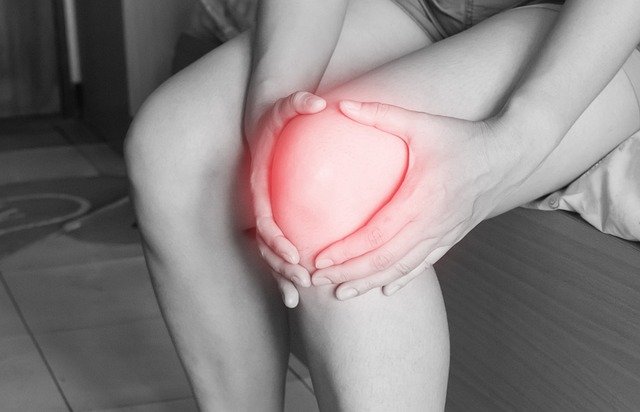Knee Pain Relief: Treatments That Could Help You Feel Better
Knee pain can be a debilitating condition that affects people of all ages and lifestyles. Whether caused by injury, arthritis, or overuse, finding effective relief is crucial for maintaining mobility and quality of life. This article explores various treatment options for knee pain, ranging from conservative approaches to more advanced interventions. We'll delve into both natural remedies and medical treatments, helping you understand the range of solutions available for your specific knee pain concerns.

What are the most common causes of knee pain?
Knee pain can stem from a variety of sources, each requiring a tailored approach to treatment. Common causes include osteoarthritis, which occurs when the cartilage in the knee joint wears down over time. Injuries such as ligament tears (like ACL or MCL injuries) and meniscus damage are also frequent culprits, especially among athletes and active individuals. Overuse injuries, including tendinitis and bursitis, can develop from repetitive motions or excessive strain on the knee. Additionally, conditions like rheumatoid arthritis, gout, and infections can lead to knee pain and inflammation. Understanding the root cause of your knee pain is crucial in determining the most effective treatment plan.
How can I find relief from knee pain at home?
For many individuals experiencing mild to moderate knee pain, home remedies can provide significant relief. The RICE method - Rest, Ice, Compression, and Elevation - is often recommended as a first-line treatment for acute knee injuries or flare-ups. Applying ice to the affected area for 15-20 minutes several times a day can help reduce inflammation and numb pain. Over-the-counter pain relievers such as ibuprofen or naproxen can also help manage pain and reduce swelling. Gentle stretching exercises and low-impact activities like swimming or cycling can help maintain knee flexibility and strength without putting excessive stress on the joint. Some people find relief through natural remedies like turmeric or ginger supplements, known for their anti-inflammatory properties, though it’s important to consult with a healthcare provider before starting any new supplement regimen.
What professional treatments are available for knee pain?
When home remedies aren’t sufficient, professional medical treatments can offer more targeted relief for knee pain. Physical therapy is often prescribed to strengthen the muscles surrounding the knee, improve flexibility, and correct any biomechanical issues contributing to pain. For more severe pain, doctors may recommend corticosteroid injections to reduce inflammation and provide short-term relief. Hyaluronic acid injections can help lubricate the joint in cases of osteoarthritis. In some cases, platelet-rich plasma (PRP) therapy or stem cell injections may be suggested to promote healing and reduce pain, although these treatments are still being studied for long-term efficacy. For chronic or severe knee pain that doesn’t respond to conservative treatments, surgical options like arthroscopy or knee replacement may be considered.
Are there effective natural remedies for knee pain relief?
Many individuals seek natural remedies for knee pain relief, either as a complement to conventional treatments or as a primary approach. Acupuncture has shown promise in reducing knee pain and improving function, particularly for osteoarthritis patients. Massage therapy can help relax tense muscles around the knee and improve circulation to the area. Certain herbs and supplements, such as glucosamine and chondroitin, are popular for joint health, though scientific evidence on their effectiveness is mixed. Essential oils like eucalyptus or peppermint, when diluted and applied topically, may provide a cooling sensation that temporarily relieves pain. Weight management is also crucial, as excess weight puts additional stress on the knees. Adopting an anti-inflammatory diet rich in omega-3 fatty acids, fruits, and vegetables may help reduce overall inflammation in the body, potentially benefiting knee health.
What lifestyle changes can help manage knee pain long-term?
Long-term management of knee pain often requires lifestyle modifications to support joint health and prevent further damage. Regular low-impact exercise, such as swimming, cycling, or using an elliptical machine, can help maintain muscle strength and joint flexibility without excessive strain on the knees. Maintaining a healthy weight is crucial, as every pound lost reduces the load on your knees by about four pounds during walking activities. Proper footwear with good arch support and cushioning can help distribute weight evenly and reduce stress on the knees. For those who spend long hours standing or walking on hard surfaces, using cushioned mats or insoles can provide additional support. Incorporating regular stretching and strengthening exercises for the legs, particularly the quadriceps and hamstrings, can improve knee stability and function. Additionally, learning proper body mechanics for activities like lifting or climbing stairs can help prevent unnecessary strain on the knees.
How do I choose the right knee pain treatment for my situation?
Selecting the most appropriate knee pain treatment depends on various factors, including the underlying cause of pain, its severity, and your overall health condition. It’s essential to consult with a healthcare professional for an accurate diagnosis and personalized treatment plan. Your doctor may recommend starting with conservative treatments like physical therapy and medication before considering more invasive options. They might also suggest a combination of treatments for optimal results.
Here’s a comparison of common knee pain treatments to help you understand your options:
| Treatment | Best For | Potential Benefits | Considerations |
|---|---|---|---|
| Physical Therapy | Mild to moderate pain, muscle weakness | Improved strength and flexibility, pain reduction | Requires consistent effort and time |
| Medications (NSAIDs) | Acute pain and inflammation | Quick pain relief | Potential side effects with long-term use |
| Corticosteroid Injections | Moderate to severe inflammation | Rapid pain relief | Limited number of injections per year |
| Hyaluronic Acid Injections | Osteoarthritis | Improved joint lubrication | May require multiple injections |
| PRP Therapy | Tendon injuries, early osteoarthritis | Promotes natural healing | Newer treatment, may not be covered by insurance |
| Surgery (e.g., Knee Replacement) | Severe, chronic pain unresponsive to other treatments | Long-term pain relief and improved function | Invasive, requires significant recovery time |
Prices, rates, or cost estimates mentioned in this article are based on the latest available information but may change over time. Independent research is advised before making financial decisions.
In conclusion, knee pain relief is achievable through a variety of treatments, ranging from simple home remedies to advanced medical interventions. The key to finding effective relief lies in accurate diagnosis, personalized treatment plans, and often a combination of approaches. By working closely with healthcare professionals and making necessary lifestyle adjustments, many individuals can find significant improvement in their knee pain and overall quality of life. Remember that what works best can vary from person to person, so patience and persistence in finding the right solution for your specific situation are essential.
This article is for informational purposes only and should not be considered medical advice. Please consult a qualified healthcare professional for personalized guidance and treatment.




